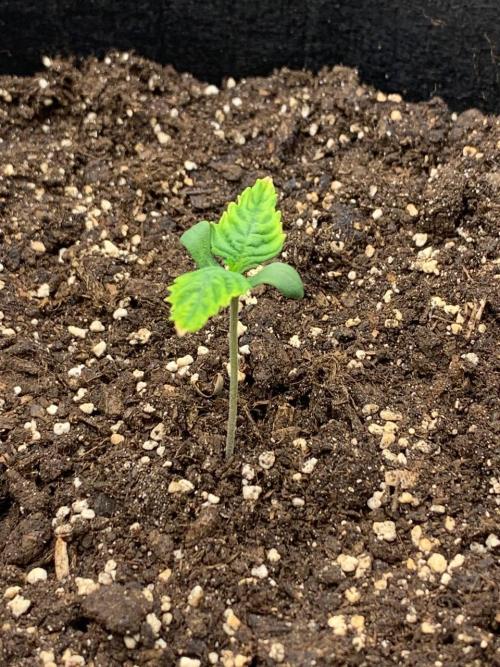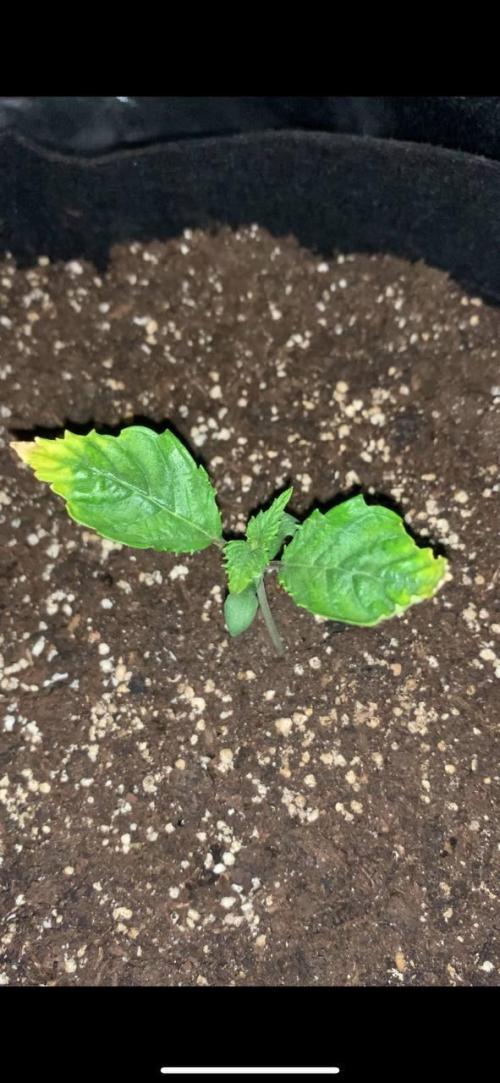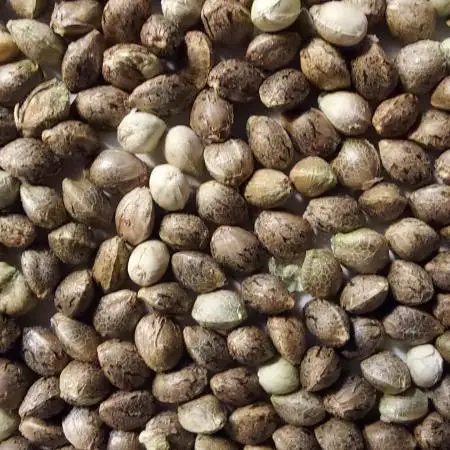could be light-related, but node spacing doesn't seem overly tight. I'd wager this is more environmental or possibly some bad watering habits causing some unsuaully high pockest of concentration of nutes in root zone.
It's more difficult to water a tiny plant in a big pot -- the risks and typicla problems outweight the perceived risks of potting up with autoflowers. If this is an auto, never be afraid to pot-up. I've potted up 400ish times and yet to see 1 single plant shocked from this behaviour.
Watering in a big pot/small plant situation... You should be watering in a small diameter just wider than the canopy, but ensure this moisture goes all the way down to the bottom. Otherwise you are training shitty, superficial roots. also, the drying pattern will cause more problems if you don't. So, make sure it's wet at bottom of pot. Slowly increase diameter of irrigtation as the plant grows.
The ebb and flow of moisture around the boundaries of this moisture is where bad things can happen. Concentration levels can skyrocket in these zones and roots touching those areas will not be happy, whic means potential problems for the plant above ground too.
An appropriately sized pot makes for much easier irrigation and avoids all these problems with good habits... fully saturate (10% runoff if soilless) and wait for appropriate dryback/loss of weight before re-irrigating. Simple as that. Always fully saturate when a plant is the right size for the pot. This promotes the best root system and if done right should eliminate any superficial roots. You don't want roots in that top inch or so. If you do, it's a sign of bad irrigationa habits. Also, if fully saturate causes any issues, it's indicative of a poorly constituted substrate and nothing else. Add more perlite if simple act of watering causes any drooping or deprives roots of O2.
light -- it's more complicated than just hours of operation. photons per second multiplied by hours of operation is what matters -- rate x time. read up on daily light integral - the wiki is sufficient. DLI is what matters as far as how much light to provide. Efficacy of the light and intensity of the light will impact how many watts per sq ft and how long to keep it on to reach a targeted DLI (35-40 DLI is a good starting spot)
Always observe and adjust relative to plant growth in this regard, but these informed starting points can minimize how much adjustment is needed. Local variables matter and will cause one garden to be different from another as far as just how much DLI you can give a plant -- on top of some genetic variance. This stuff is a tool, not an absolute one-size-fits-all answer, which is usually the perception of people that dislike it or misuse it.
Anyway, if your light spec sheet is accurate you can take some numbers and guesstimate your DLI and make a more informed decision if that was part of the problem here.
umol/s produced by your light divided by area in m^2. This will be a rough estimate of PPFD -- assumes 'normal' hanging distance and a properly focused light on the area used in previous calculation. this is 'at the diode' and not at the canopy PPFD, so it's just a rough idea of DLI, but it works well with the context of a tent and typical hanging distances for LED lights... 35-40DLI at the diode. It'll be less at the canopy - missing plant and absorbed by walls.
So, take that rough PPFD, google a DLI table and cross reference with hours of operation == DLI. If it's exceedingly high compared to 35-40 dli, it's very likely part of the problem.
This can also help you adjust hours of operation, dimming or hanging distance. Each can be used to manipulate how much DLI is provided. it can help you eliminate it as a possiblity if less than ~35 dli, too... th emiddle area is more of a grey area that will need other factors to be cross-referenced to undrstand if a tweak is needed in this regard.


























































